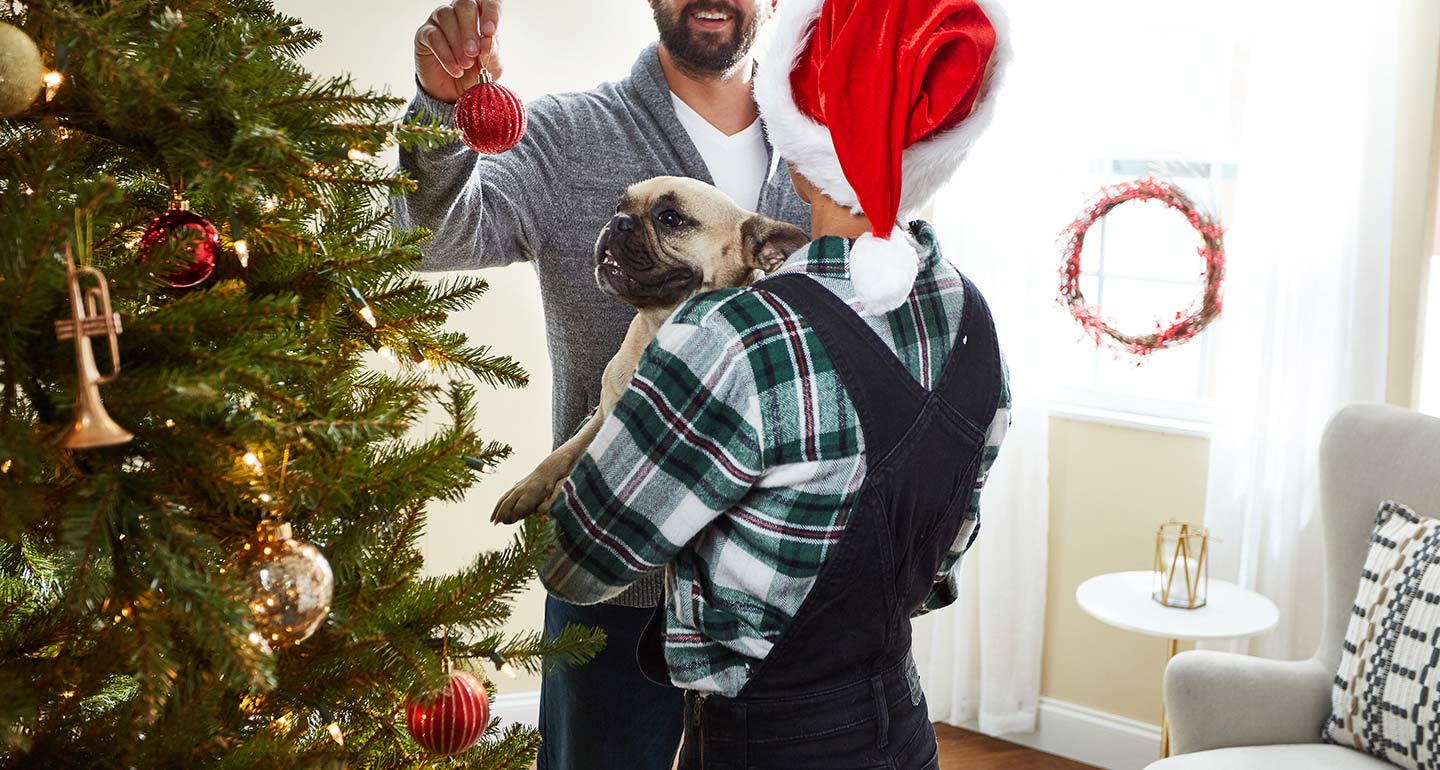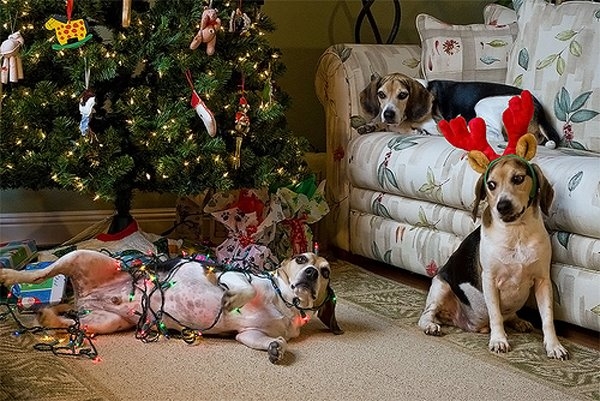
The holiday season is upon us, and with it comes the joy of decorating our homes with festive lights, wreaths, and of course, the Christmas tree. However, for many pet owners, this time of year can also bring a unique set of challenges. One of the most common and frustrating issues is when a dog eats the Christmas tree. If this has happened to you, don't panic. In this article, we'll explore what to do next and how to prevent this from happening again in the future.
Dogs are naturally curious creatures, and the Christmas tree, with its shiny ornaments, enticing lights, and fragrant pine scent, can be an irresistible temptation. Some dogs might even see the tree as a giant chew toy, which can lead to a range of problems, from minor messes to serious health issues. If you've caught your dog in the act of eating the Christmas tree or have discovered evidence of tree-munching after the fact, here's what you need to do.
Immediate Action: Assess the Situation

The first step is to assess the situation and determine the extent of the damage. Check your dog's behavior and look for any signs of illness, such as vomiting, diarrhea, or lethargy. If your dog has ingested a large amount of tree material, it's essential to monitor their condition closely and seek veterinary attention if you notice any adverse reactions.
Common Hazards Associated with Eating Christmas Trees
While a small amount of Christmas tree material might not cause significant harm, there are several potential hazards to be aware of:
- Pine needles can cause gastrointestinal irritation, including vomiting and diarrhea.
- Ornaments, lights, and other decorations can be a choking hazard or cause intestinal blockages if ingested.
- The sap of some Christmas trees, such as fir or spruce, can be toxic to dogs.
- Electrical shock is a risk if your dog bites into a lit tree or ingests a faulty light cord.
Preventing Future Incidents

To prevent your dog from eating the Christmas tree in the future, here are some practical tips:
- Keep the tree out of reach: Place the tree in a room that can be closed off to your dog, or use baby gates to block access.
- Use dog-deterrent ornaments: Hang ornaments made from dog-unfriendly materials, such as citrus-scented or spicy decorations.
- Secure the tree: Anchor the tree to the ceiling or a sturdy wall to prevent it from tipping over.
- Supervise: Keep a close eye on your dog when they're in the same room as the tree.
- Provide alternative chew toys: Offer your dog a variety of durable chew toys to satisfy their natural urge to chew.
Keeping Your Dog Safe During the Holiday Season
In addition to protecting your Christmas tree, there are several other holiday-related hazards to be aware of:
- Keep toxic substances, such as chocolate and cleaning supplies, out of reach.
- Avoid leaving electrical cords or wires exposed.
- Secure any loose items, such as wrapping paper or gift boxes, that could be a choking hazard.
- Keep an eye on your dog's calorie intake, as holiday treats can add up quickly.
Cleaning Up the Mess

If your dog has eaten the Christmas tree, you'll need to clean up the mess carefully to avoid any further damage or hazards. Here's a step-by-step guide:
- Remove any remaining tree material, including ornaments and lights.
- Vacuum the area thoroughly to pick up any pine needles or debris.
- Mop the floor with a pet-safe cleaning solution to remove any sap or stains.
- Disinfect any surfaces that may have come into contact with the tree material.
Tips for Choosing a Dog-Friendly Christmas Tree
If you're planning to get a new Christmas tree this year, consider choosing a dog-friendly option:
- Opt for an artificial tree, which can be just as festive and attractive as a real one.
- Choose a tree with a narrow profile, which will be less tempting to your dog.
- Select a tree with a sturdy base, which will be harder for your dog to knock over.
Conclusion
A dog eating the Christmas tree can be a stressful and frustrating experience, but with the right knowledge and precautions, you can prevent this from happening again in the future. By following the tips outlined in this article, you can enjoy a happy and safe holiday season with your furry friend by your side.




What should I do if my dog eats the Christmas tree?
+Monitor your dog's behavior and look for any signs of illness, such as vomiting, diarrhea, or lethargy. If you notice any adverse reactions, seek veterinary attention immediately.
How can I prevent my dog from eating the Christmas tree?
+Keep the tree out of reach, use dog-deterrent ornaments, secure the tree to the ceiling or a sturdy wall, and provide alternative chew toys.
What are some common hazards associated with eating Christmas trees?
+Pine needles can cause gastrointestinal irritation, ornaments and lights can be a choking hazard or cause intestinal blockages, and the sap of some Christmas trees can be toxic to dogs.




.jpg)






